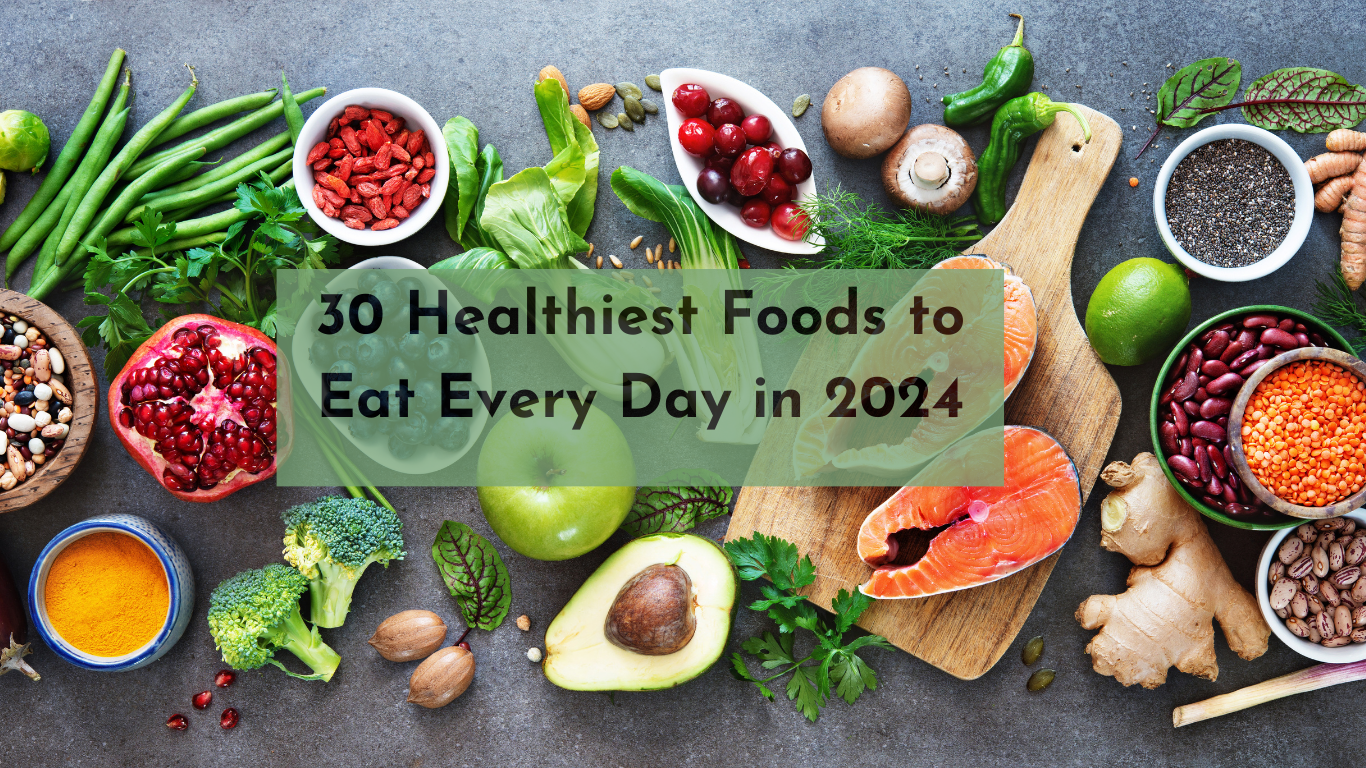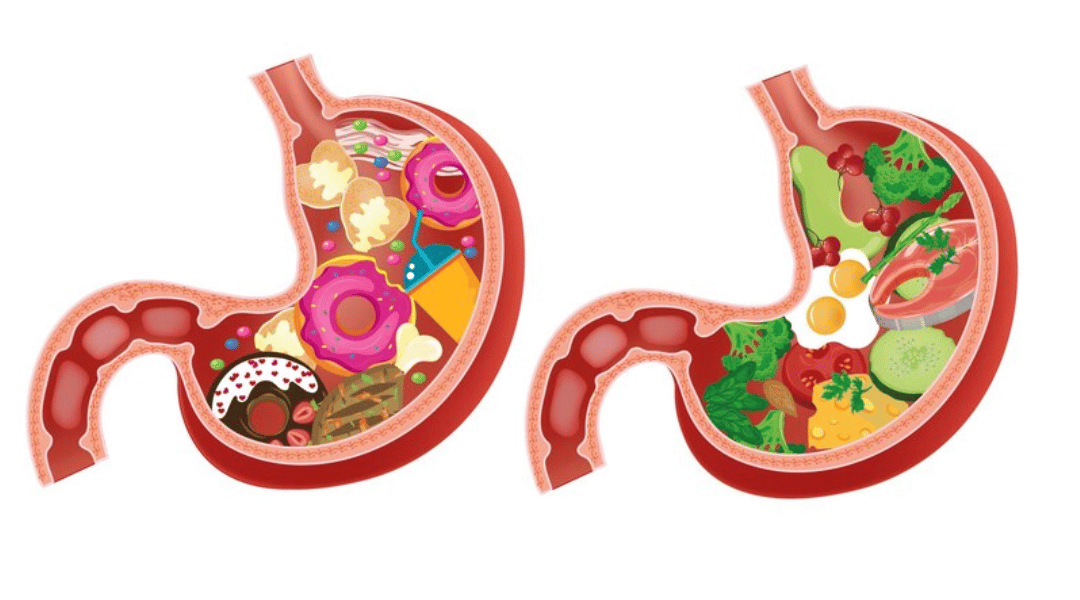Introduction
Fiber is a type of carbohydrate that the body cannot digest. It is found in plant based foods, such as fruits, vegetables, whole grains, and legumes.
A. Importance of dietary fiber in a healthy diet:
High fiber food is an essential component of a healthy and balanced diet. It refers to the indigestible part of plant-based foods that passes relatively unchanged through digestive system. While our bodies cannot fully break down fiber, it plays a crucial role in maintaining overall health.
Consuming an adequate amount of dietary fiber is important for several reasons. Firstly, fiber aids in maintaining bowel regularity by promoting healthy digestion and preventing constipation. It adds bulk to stool and helps it move smoothly through the digestive tract, preventing discomfort and promoting regular bowel movements.
Secondly, dietary fiber contributes to weight management and helps prevent weight gain. High-fiber foods tend to be more filling and can curb hunger, which can be beneficial for those looking to manage their weight. Fiber rich foods also often have fewer calories, making them a healthier option.
B. Benefits of consuming foods with high fiber regularly:
- Bettered digestive health: High fiber foods support a healthy digestive system by precluding constipation, promoting regular bowel movements, and reducing the threat of digestive diseases similar to diverticulitis and hemorrhoids.
- Reduced threat of habitual conditions: Foods with high fiber has been associated with a dropped threat of colorful habitual conditions, including heart complaint, stroke, type 2 diabetes, and certain types of cancer. The answerable fiber set up in foods like oats, sap, and fruits can help lower cholesterol situations and regulate blood sugar situations.
- Weight operation: Foods with high fiber end to be low in calories and give a feeling of wholeness, reducing overall calorie input. They can help control appetite, help gluttony, and contribute to maintaining a healthy weight.
- Blood sugar control: Fiber slows down immersion of sugar into the bloodstream, helping to regulate blood sugar situations. This is particularly important for individuals with diabetes or those at threat of developing conditions.
- Better heart health: Consuming a high fiber foods diet has been linked to a reduced threat of heart complaint. Answerable fiber helps lower LDL( bad) cholesterol situations, thereby reducing the threat of cardiovascular problems.
- Enhanced gut health: Certain types of fiber, known as prebiotics, serve as food for salutary gut bacteria. These bacteria play a pivotal part in maintaining a healthy gut microbiome, which is linked to better vulnerable function and overall well- being.
Incorporating foods with in fiber into your daily diet can provide numerous health benefits and contribute to overall wellness. By choosing a variety of fiber-rich foods, such as legumes, whole grains, fruits, vegetables, seeds, and nuts, you can easily increase your fiber intake and enjoy the advantages of a fiber rich diet.
How much fiber do I need?
The recommended daily intake of fiber food for adults is 25 grams for women and 38 grams for men. However, most Americans do not get enough fiber in their diet.
How can I get more fiber?
There are many ways to get more fiber in your diet. Here are a few tips:
- Eat plenty of fruits and vegetables: Fruits and vegetables are a great source of fiber. Aim to eat at least five servings of fruits and vegetables per day.
- Choose whole grains over refined grains: Whole grains are a good source of fiber. When choosing bread, pasta, cereal, and other grain-based foods, look for words “whole grain” on the label.
- Add legumes to your meals: Legumes, such as beans, lentils, and peas, are a good source of fiber. You can add them to soups, salads, and stews.
- Eat nuts and seeds: Nuts and seeds are a good source of fiber. You can add them to your breakfast cereal, yogurt, or trail mix.
- Drink plenty of water: Fiber needs water to work properly. Aim to drink eight glasses of water per day.
If you are not getting enough fiber in your diet, you may want to consider taking a fiber supplement. Fiber supplements come in a variety of forms, including powders, capsules, and bars. However, it is important to talk to your doctor before taking a fiber supplement, as some fiber supplements can interact with medications or have other side effects.
15 Foods with High Fiber to Add to Your Diet
“Dietary fiber provides a whole slew of health benefits when consumed in adequate amounts. It not only promotes ‘regularity,’ it also reduces your risk of several chronic diseases and plays a crucial role in successful weight loss.”
Harley Pasternak
You may be eating high fiber food every day but is it sufficient for your body? It’s tough to fulfill the fiber demand criteria especially when you’re tired of eating vegetables. Then are some high fiber food options which you’ll enjoy.

I. Legumes and Pulses
A. Black Beans:
Black beans are a type of legume known for their rich flavor and dense nutritional profile. They are an excellent source of fiber food, making them a valuable addition to a high fiber diet. A one-cup serving of cooked black beans contains about 15 grams of fiber, which is approximately half of the recommended daily intake for adults.
In addition to their high fiber content, black beans are also packed with protein, vitamins, and minerals. They are a good source of plant based protein, making them a suitable option for vegetarians and vegans. Black beans are also rich in folate, iron, magnesium, and potassium, which contribute to various aspects of overall health, such as heart health, energy production, and bone strength.
B. Lentils:
Lentils, another member of the legume family, are small, lens shaped legumes available in various colors, including green, brown, red, and black. They are an exceptional source of dietary fiber, with a one-cup serving of cooked lentils providing approximately 15-18 grams of fiber.
Lentils are known for their versatility in cooking and are commonly used in soups, stews, salads, and side dishes. Besides their high fiber content, lentils are an excellent source of plant-based protein, making them an ideal choice for individuals looking to increase their protein intake while reducing their consumption of animal products. They are also rich in folate, iron, manganese, and other essential vitamins and minerals.
C. Chickpeas:
Chickpeas, also known as garbanzo beans, are widely consumed legumes, particularly in Mediterranean and Middle Eastern cuisines. They offer numerous health benefits and are a fantastic source of dietary fiber. A one cup serving of cooked chickpeas contains around 12-15 grams of fiber.
Chickpeas are an excellent addition to a high-fiber diet due to their ability to promote digestive health, regulate blood sugar levels, and support weight management. They are also a good source of plant-based protein, making them a valuable alternative for individuals following vegetarian or vegan diets. Chickpeas are rich in vitamins and minerals, including folate, iron, phosphorus, and B-vitamins, which contribute to various bodily functions.
Incorporating black beans, lentils, and chickpeas into your daily diet can help you meet your dietary fiber needs while providing a range of other essential nutrients. These legumes offer a plant-based protein alternative, promote digestive health, and contribute to overall well-being. Including them in various recipes, such as salads, soups, curries, or even as a standalone side dish, can add both flavor and nutritional value to your meals.
II. Whole Grains

A. Oats:
Oats are a popular whole grain that provides numerous health benefits. They are an excellent source of dietary fiber, particularly soluble fiber called beta-glucan. This soluble fiber helps lower cholesterol levels, reduce the risk of heart disease, and stabilize blood sugar levels. Oats also contain antioxidants, vitamins, and minerals, making them a nutrient-rich choice.
One of the reasons oats are widely consumed is their versatility. They can be enjoyed as oatmeal, added to smoothies, used in baked goods, or incorporated into granola and energy bars. Opt for steel-cut or rolled oats instead of instant oats to retain more nutrients and a better texture.
B. Quinoa:
Quinoa is a unique grain-like seed that is highly nutritious and gluten-free. It is often referred to as a “superfood” due to its exceptional nutritional profile. Quinoa is a complete protein, meaning it contains all essential amino acids required by body. This makes it an excellent option for vegetarians and vegans.
Besides being a protein powerhouse, quinoa is rich in dietary fiber, vitamins (such as B vitamins), and minerals (like magnesium, iron, and zinc). It also has a low glycemic index, making it beneficial for blood sugar control. Quinoa has a mild, nutty flavor and a versatile texture, making it suitable for a variety of dishes, including salads, stir fries, and pilafs.
C. Brown rice:
Brown rice is a whole grain that offers more nutritional benefits compared to its refined counterpart, white rice. The outer bran layer of brown rice remains intact, providing dietary fiber, vitamins, and minerals that are lost during the refining process. It is an excellent source of complex carbohydrates, which provide sustained energy and keep you feeling full for longer.
Brown rice contains more fiber than white rice, which aids in digestion and helps regulate bowel movements. It is also rich in essential minerals like magnesium and selenium. Incorporating brown rice into your meals can help improve heart health, manage weight, and reduce risk of developing type 2 diabetes. It has a slightly chewy texture and nutty flavor, making it a great option as a side dish, in stir-fries, or as a base for grain bowls.
In conclusion, whole grains like oats, quinoa, and brown rice are highly beneficial for a balanced diet. They provide essential nutrients, dietary fiber, and contribute to overall health and well being. By incorporating these whole grains into your daily meals, you can enjoy their unique flavors and reap their numerous health benefits.
III. Fruits

A. Apples:
Apples are not only delicious but also a great source of dietary fiber. They contain both soluble and insoluble fiber, making them an excellent choice for promoting healthy digestion. The majority of fiber in apples is found in the skin, so it’s best to eat them with peel intact. A medium sized apple contains around 4 grams of fiber, which helps regulate blood sugar levels, improve bowel movements, and promote a feeling of fullness, making it an ideal snack for weight management.
B. Raspberries:
Raspberries are small, vibrant berries packed with fiber and a range of beneficial nutrients. These berries are particularly high fiber, which helps slow down digestion and keeps you feeling fuller for longer. Just a cup of raspberries contains approximately 8 grams of fiber, which is impressive. Including raspberries in your daily diet can support digestive health, aid in maintaining a healthy weight, and contribute to overall heart health.
C. Avocado:
Avocado is a unique fruit that offers numerous health benefits including being an excellent source of high fiber. Avocados are rich in both soluble and insoluble fiber, making them an excellent choice for promoting healthy digestion and preventing constipation. A medium-sized avocado contains around 9 grams of fiber, which is quite high compared to other fruits. Additionally, avocados are packed with healthy fats, vitamins, and minerals, making them a nutritious addition to your meals.
Incorporating these high fiber fruits into your daily diet can be as simple as enjoying sliced apples as a snack, adding raspberries to your morning oatmeal or yogurt, and incorporating avocados into salads, sandwiches, or as a creamy spread. Remember to vary your fruit intake to benefit from a wide range of nutrients and flavors while achieving your daily fiber goals.
It’s worth noting that while these fruits are high in dietary fiber, they should be consumed as part of a balanced diet that includes a variety of other nutrient rich foods. Drinking plenty of water is also important to support the proper functioning of fiber in your body and maximize its benefits.
IV. Vegetables

A. Broccoli:
Broccoli is a cruciferous vegetable that is not only delicious but also packed with dietary fiber. It is known for its vibrant green color and distinctive, tightly packed florets. Here are some key points about broccoli:
- High Fiber Content: Broccoli is an excellent source of dietary fiber. One cup of cooked broccoli contains around 5 grams of fiber, which contributes to a healthy digestive system and aids in maintaining regular bowel movements.
- Nutrient Rich: Apart from fiber, broccoli is also rich in essential nutrients such as vitamins C, K, and A, as well as folate and potassium. These nutrients provide various health benefits, including immune system support, bone health, and vision maintenance.
- Antioxidant Properties: Broccoli is known for its high antioxidant content, which helps protect the body’s cells from damage caused by harmful free radicals. This can contribute to a reduced risk of chronic diseases, such as heart disease and certain types of cancer.
B. Carrots:
Carrots are root vegetables that are widely recognized for their vibrant orange color and crunchy texture. They are not only tasty but also provide a good amount of dietary fiber. Consider following points about carrots:
- Fiber Content: Carrots are a good source of dietary fiber, with one medium sized carrot providing around 2 grams of fiber. Including carrots in your diet can help support a healthy digestive system and promote satiety.
- Beta carotene and Vitamin A: Carrots are particularly known for their high content of beta-carotene, a pigment that the body converts into vitamin A. Vitamin A is essential for maintaining healthy skin, supporting good vision, and promoting immune function.
- Antioxidant Benefits: Carrots are rich in antioxidants, such as beta-carotene and lutein, which can help protect the body against oxidative stress and reduce risk of chronic diseases, including certain cancers and heart disease.
C. Brussels Sprouts:
Brussels sprouts are small, leafy green vegetables that resemble mini cabbages. They have a slightly bitter taste but offer numerous health benefits, including being a good source of dietary fiber. Consider the following points about Brussels sprouts:
- Fiber Content: Brussels sprouts are an excellent source of dietary fiber, with approximately 4 grams of fiber per cup when cooked. This high fiber content contributes to digestive health, aids in weight management, and helps maintain stable blood sugar levels.
- Nutrient-Dense: In addition to fiber, Brussels sprouts are rich in essential vitamins and minerals, including vitamin C, vitamin K, folate, and potassium. These nutrients are important for various bodily functions, such as supporting immune health and promoting bone strength.
- Cancer Fighting Properties: Brussels sprouts contain compounds known as glucosinolates, which are converted into cancer-fighting compounds when consumed. Studies suggest that regular consumption of Brussels sprouts may help reduce the risk of certain types of cancer, such as colon and lung cancer.
V. Seeds and Nuts
A. Chia Seeds:
Chia seeds are small, nutrient dense seeds that have gained popularity for their numerous health benefits. They are packed with dietary fiber, making them an excellent addition to a high fiber diet. Here are some key points about chia seeds:

- High Fiber Content: Chia seeds are an exceptional source of dietary fiber, with about 10 grams of fiber per ounce (28 grams). Including chia seeds in your diet can help promote healthy digestion and prevent constipation.
- Omega 3 Fatty Acids: Chia seeds are rich in omega 3 fatty acids, specifically alpha-linolenic acid (ALA). Omega 3s are essential for heart health, brain function, and reducing inflammation in the body.
- Antioxidant Powerhouse: Chia seeds are loaded with antioxidants that help protect the body against damage from free radicals. Antioxidants play a vital role in reducing risk of chronic diseases and promoting overall health.
- Versatile and Easy to Use: Chia seeds can be easily incorporated into your diet. They have a neutral taste and can be sprinkled on cereals, added to smoothies, or used as an egg substitute in baking recipes.

B. Almonds:
Almonds are nutrient dense nuts that provide a wide range of health benefits. They are not only delicious but also a great source of dietary fiber. Here’s why you should consider adding almonds to your daily diet:
- Fiber Rich Nut: Almonds are a good source of dietary fiber, with about 3.5 grams of fiber per ounce (28 grams). Including almonds in your diet can help regulate digestion and promote feelings of fullness, making them a great snack option for weight management.
- Heart Healthy Nutrients: Almonds are rich in heart-healthy monounsaturated fats, which have been associated with lower LDL cholesterol levels and a reduced risk of heart disease. They also contain vitamin E, magnesium, and potassium, all of which support heart health.
- Blood Sugar Control: Almonds have a low glycemic index, meaning they have minimal impact on blood sugar levels. The fiber and healthy fats in almonds help regulate blood sugar levels and can be beneficial for individuals with diabetes or those looking to maintain stable energy levels.
- Versatile and Convenient: Almonds can be enjoyed in various forms, including whole, sliced, or as almond butter. They can be added to salads, oatmeal, yogurt, or simply enjoyed as a snack on their own.
C. Flaxseeds:
Flaxseeds are small brown or golden seeds that are rich in fiber and other essential nutrients. They have a mild, nutty flavor and offer numerous health benefits. Here’s why flaxseeds are considered a high dietary fiber food:

- Excellent Fiber Source: Flaxseeds are a fantastic source of dietary fiber, containing both soluble and insoluble fiber. Two tablespoons of flaxseeds provide around 4 grams of fiber, which helps promote regular bowel movements and supports digestive health.
- Omega 3 Fatty Acids: Flaxseeds are one of the best plant-based sources of omega-3 fatty acids. They contain alpha-linolenic acid (ALA), which has anti-inflammatory properties and supports brain health. Grinding flaxseeds before consumption enhances their nutrient absorption.
- Phytochemicals and Antioxidants: Flaxseeds are rich in lignans, a type of phytochemical with antioxidant properties. Lignans have been associated with a reduced risk of certain cancers, cardiovascular disease, and menopausal symptoms.
- Versatile and Easy to Incorporate: Flaxseeds can be ground and added to smoothies, oatmeal, baked goods, or used as an egg substitute in recipes. It’s essential to grind flaxseeds as whole seeds may pass through the digestive system undigested.
Conclusion
In conclusion, incorporating high salutary fiber foods into your diurnal diet can have multitudinous benefits for your overall health. Legumes and beats similar as black sap, lentils, and chickpeas are excellent sources of fiber and can be included in colorful dishes. Whole grains like oats, quinoa, and brown rice give both fiber and essential nutrients. Fruits similar to apples, snorts, and avocados offer a sweet and nutritional way to increase your fiber input. Vegetables like broccoli, carrots, and Brussels sprouts not only give fiber but also offer a wide range of vitamins and minerals. Incipiently, incorporating seeds and nuts like chia seeds, almonds, and flaxseeds into your diet can add both fiber and healthy fats. By regularly consuming these 15 foods with high fiber, you can promote healthy digestion, maintain a healthy weight, lower the threat of habitual conditions, and ameliorate overall well- being. Flash back, a balanced and fiber-rich diet is crucial to a healthy life.







